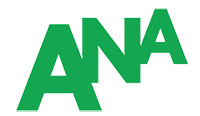Our Spring 2011 national online multicultural consumer data shows that Latinos and other emerging minorities are not only leading in online presence with blogs and websites, but also in their use of gadgets that reflect the future of communications. By Felipe Korzenny, Ph.D.
Research
Kids Today: How the Class of 2011 Engages with Media.
1993 was a big year. The Mosaic Internet Web browser was launched, NAFTA was signed, Seinfeld won an Emmy for Outstanding Comedy Series and the high school class of 2011 was born. Nielsen congratulates the class of 2011 and takes look at today’s American teen, raised in an age dominated by media choices like never before—from the Internet to cable channels to web connected devices galore.
According to the 2011 Máximo Report …
Word-of-mouth is a vital tool that New Generation Latinos use to discover new brands and products. Factor in their intense social media consumption, and it’s no wonder the majority of them have learned of a new brand or product via social media.
Little change seen in Americans’ Spending.
Americans continue to describe the economy as bad and their reported action regarding larger purchases and non-essential spending supports this perspective. A recent Harris Poll on planned spending and saving shows that little has changed for Americans since January when these questions were last asked, and, in many cases not much has changed since late 2009, at the height of the financial crisis.
Over-the Air TV Homes now include 46 M Consumers.
According to new research by Knowledge Networks, the number of Americans now relying exclusively on over-the-air (OTA) television broadcasting in their home increased to almost 46 million, up from 42 million just a year ago. The recently completed survey also found that the demographics of broadcast-only households skew towards younger adults, minorities and lower-income families.
According to the 2011 Máximo Report …
The U.S. recession affects today’s consumers, regardless of race or ethnicity. However, many New Generation Latinos feel they are better equipped to deal with today’s recession compared to Caucasians. This is mostly due to culturally based realities that give NGLs a slightly different perspective on finances.
Marketing Data: 100 AWESOME Marketing Stats, Charts, & Graphs.
Data is a marketer’s best friend—it empowers your business to reevaluate strategies and shift resources to effective marketing channels.Available on HispanicCMO.com
2010 Census shows Nation’s Hispanic Population grew 4X faster than U.S. Population
The U.S. Census Bureau released a 2010 Census brief on the nation’s Hispanic population, which shows the Hispanic population increased by 15.2 million between 2000 and 2010 and accounted for more than half of the total U.S. population increase of 27.3 million. Between 2000 and 2010, the Hispanic population grew by 43 percent, or four times the nation’s 9.7 percent growth rate.
U.S. Hispanic Country of Origin Counts for Nation – – Top 30 Metropolitan Areas.
Hispanics of Mexican, Puerto Rican, and Cuban origin or descent remain the nation’s three largest Hispanic country-of-origin groups, according to the 2010 U.S. Census. However, while the relative position of these three groups has remained unchanged since 2000, the next four Hispanic sub-groups grew faster during the decade. DOWNLOAD REPORT HERE.
Today’s Global Youth would give Up their Sense of Smell to Keep their Technology.
McCann Worldgroup released the findings of The Truth about Youth, a quantitative study of 7000 16-30 year olds conducted in April 2011 across 7 markets – UK, USA, Spain, China, India, Brazil and Mexico which was then confirmed qualitatively in 17 markets globally. The study examined the motivations of young people around the world and sought to uncover what makes them different from every generation that has come before.
Affluence in America: The New Consumer Landscape.
Digitas, a global integrated brand agency, announced key trends from proprietary research — “Affluence in America: The New Consumer Landscape,” — developed in partnership with Ipsos Mendelsohn.
According to the 2011 Máximo Report …
New Generation Latinos are blending together aspects of different cultures to fuel the growth of the “Urban Latino” movement. They organically mix traditional Latino values with those of today’s hip-hop influenced urban culture to create new urban Latino expressions. This makes for a more dynamic and complex New Generation Latino consumer.
Housing is Top Reason people moved between 2009 and 2010.
The U.S. Census Bureau announced that among those who moved between 2009 and 2010, more than four out of 10 (16.4 million or 43.7 percent) did so for housing-related reasons, such as the desire to live in a new or better home or apartment, according to data from Geographical Mobility: 2010.
2011 Máximo Report – New Generation Latino Study.
Latino media and marketing experts, the New Generation Latino Consortiumand Motivo Insights have partnered to create the Máximo Report, the most comprehensive New Generation Latino study. The study uniquely combines both quantitative and qualitative methodologies to deliver unprecedented in-depth access to 14-34 year old Latinos, with a focus on both U.S. and foreign-borns that have lived in the U.S. for 15 years or more.
The Digital World of Millennials.
Millennials—also commonly referred to as Generation Y and echo boomers—are the first generation to come of age in the new millennium. Unsurprisingly, the internet’s role is paramount among the age group’s media habits and usage. From shopping to socializing to watching TV, they do it all online.
Uncertainty & Opportunity in the global youth market.
TRU predicted two years ago that a burgeoning global youth population, armed with unprecedented access to information and communication, would force significant changes to the status quo.




























